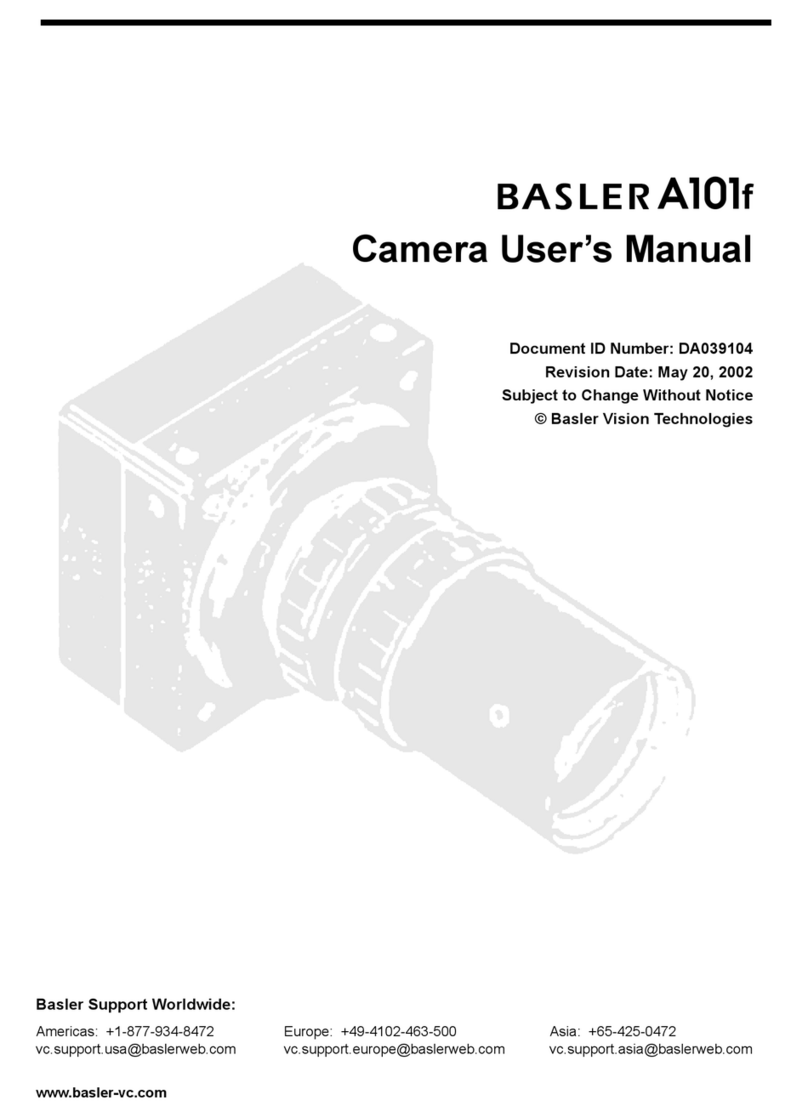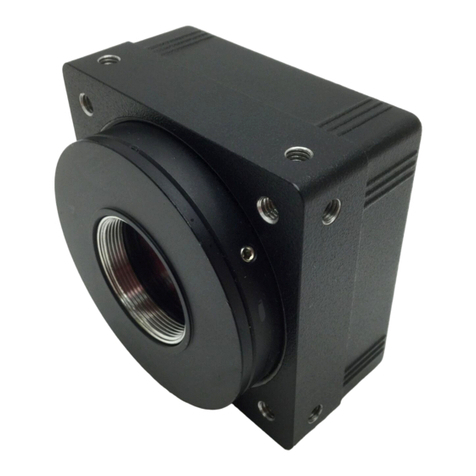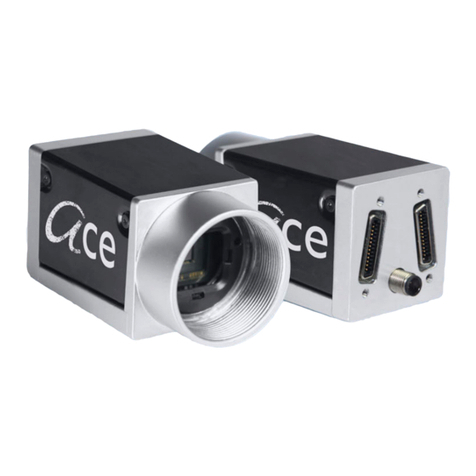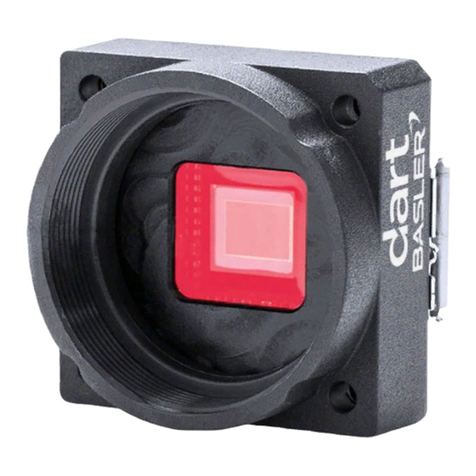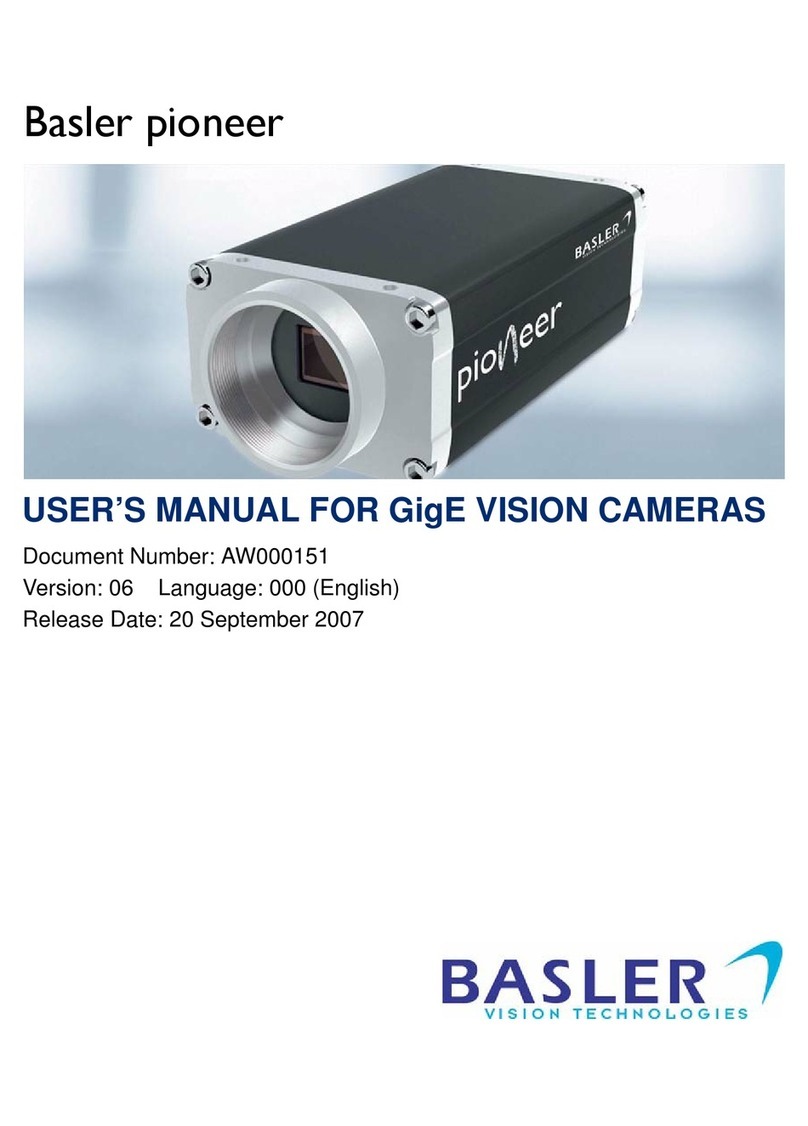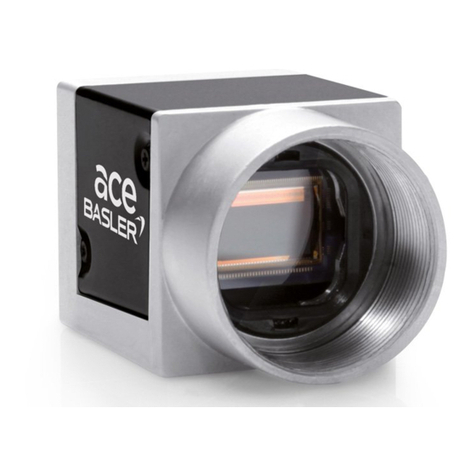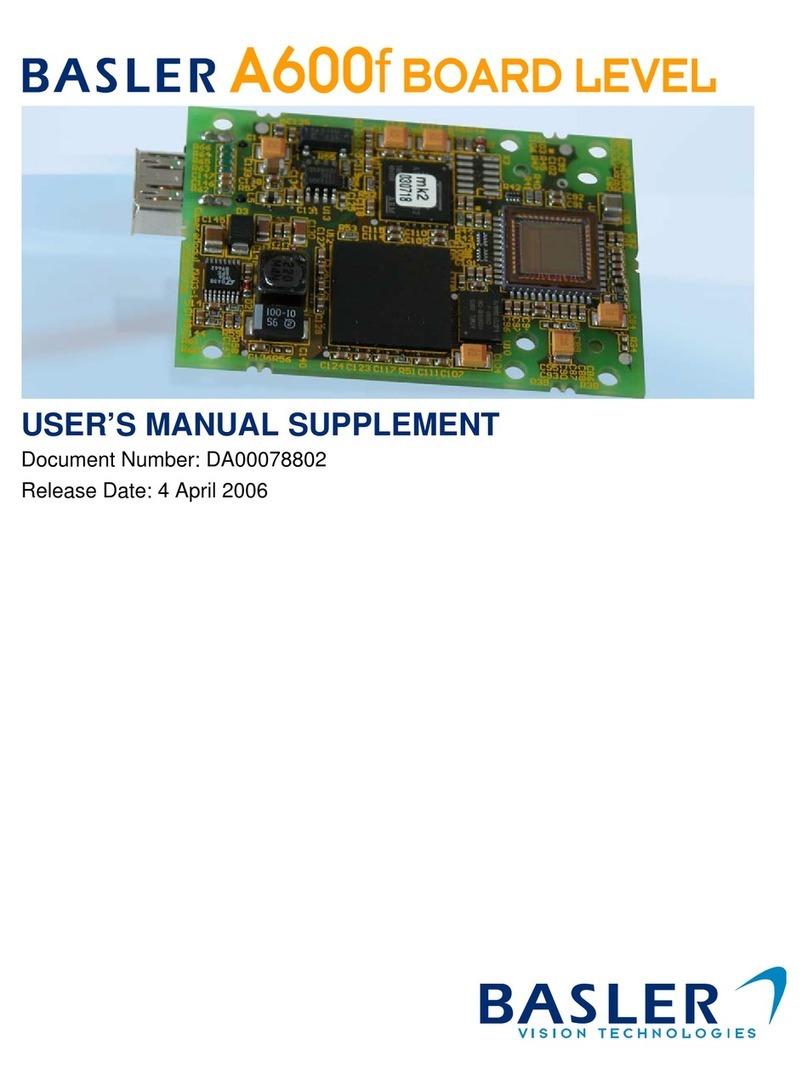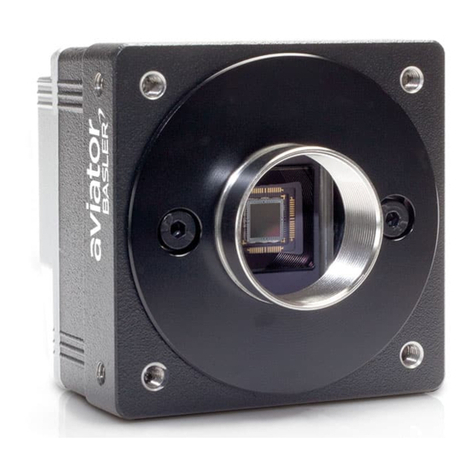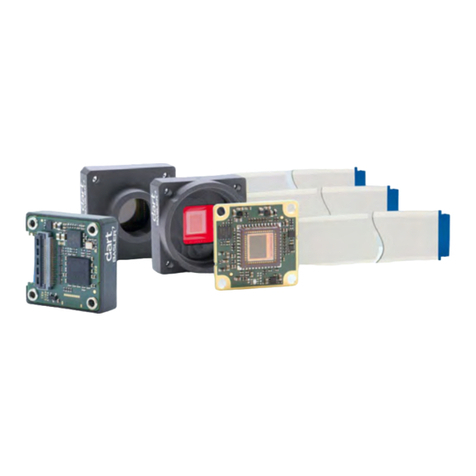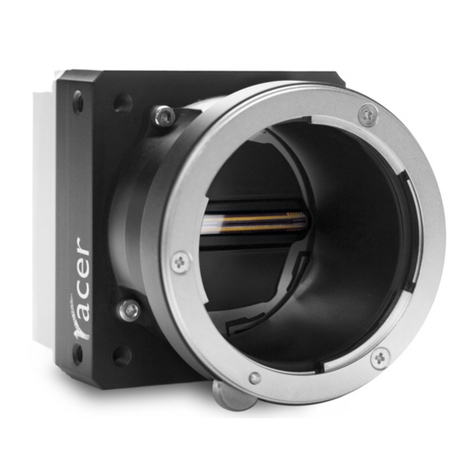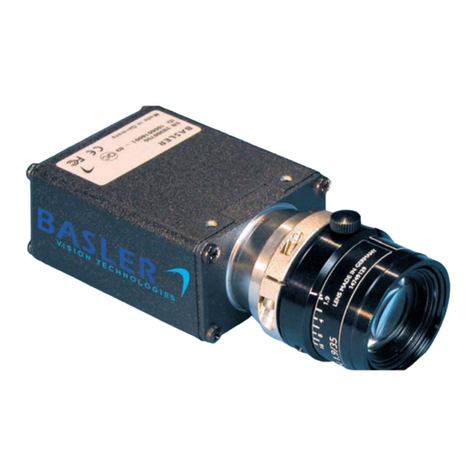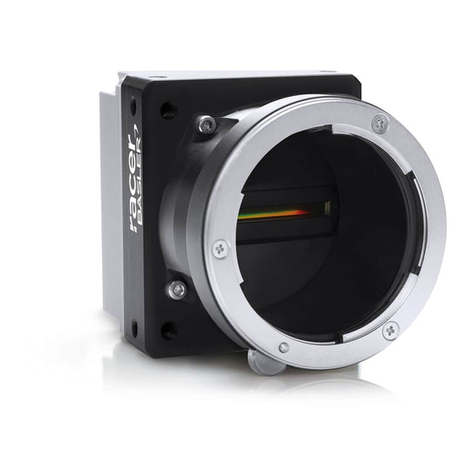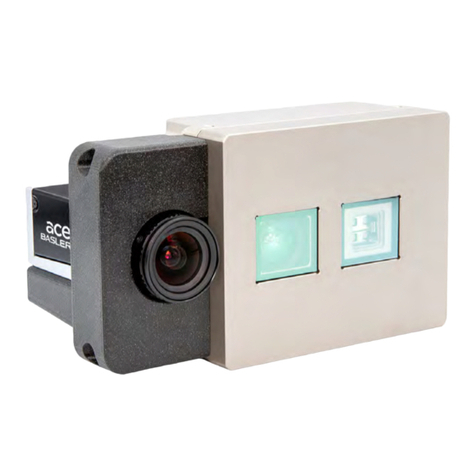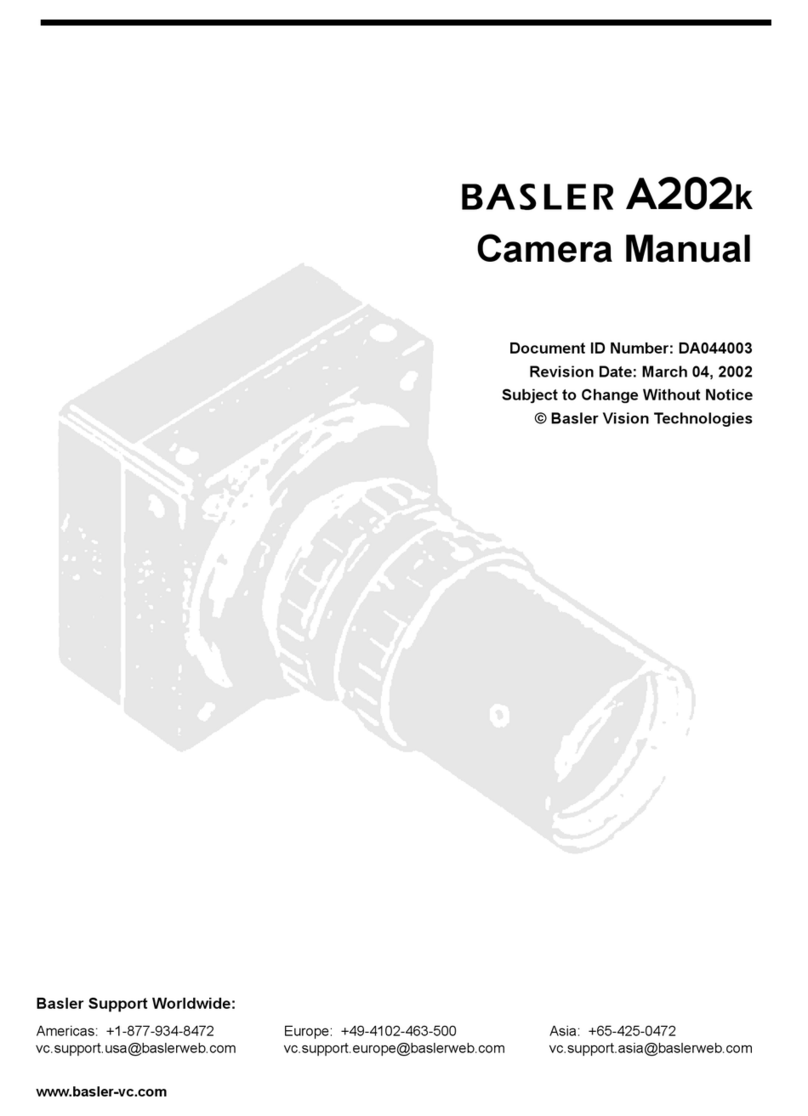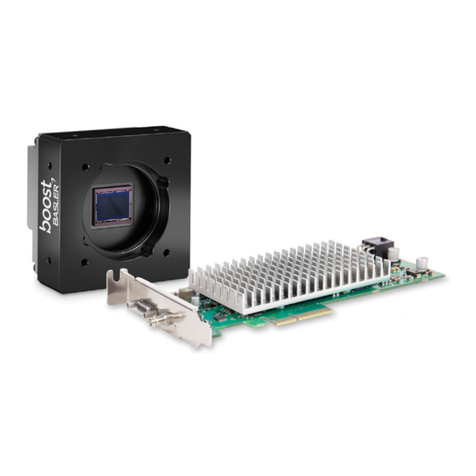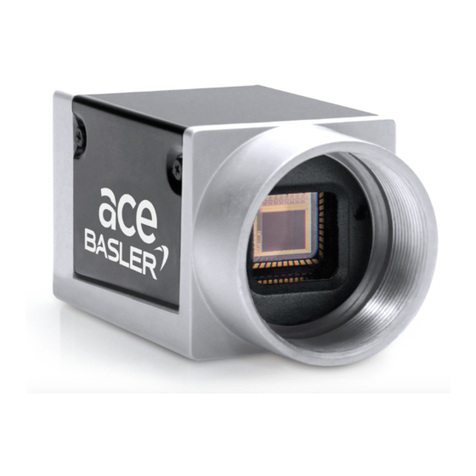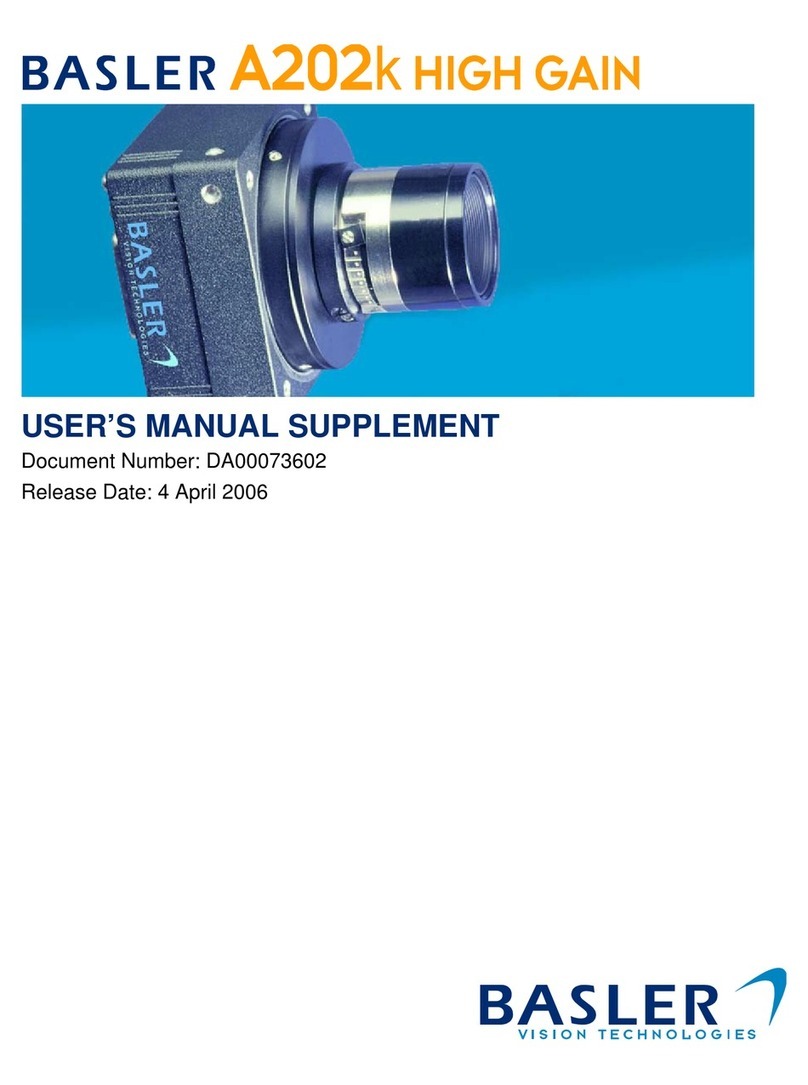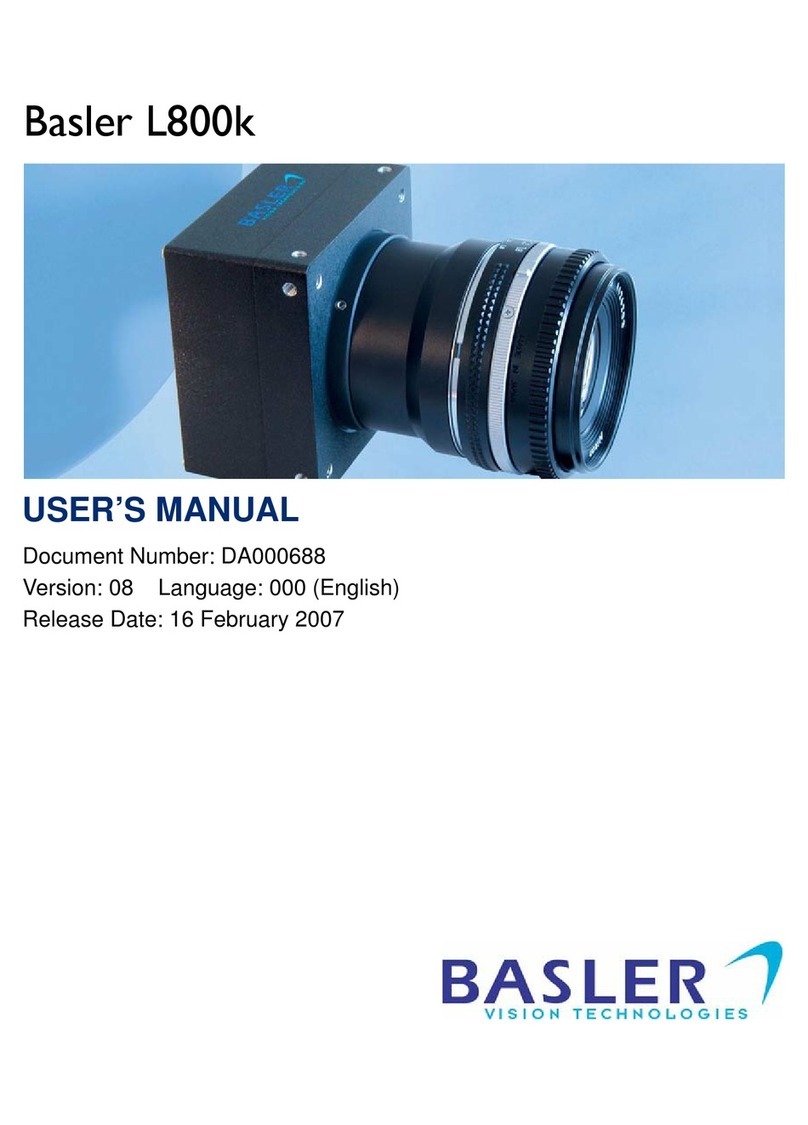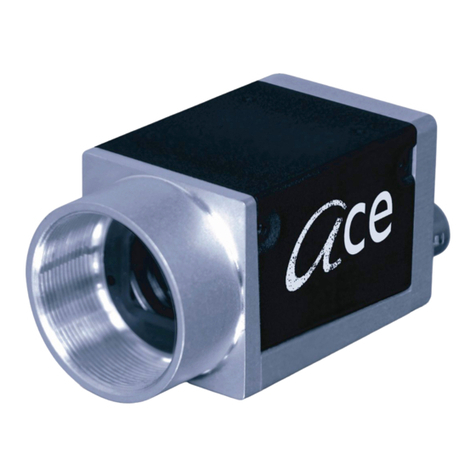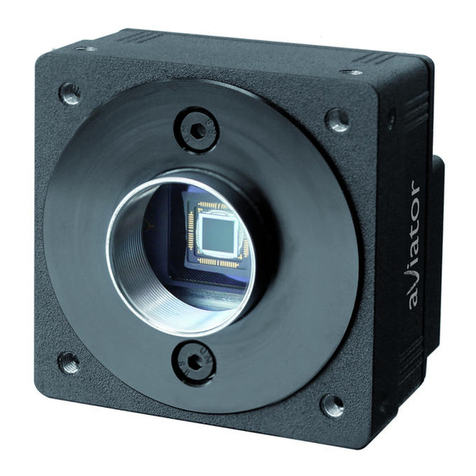You must supply camera power that complies with the Universal Serial Bus 3.0
specication.
The camera’s nominal operating voltage is 5 VDC, effective on the camera’s connector.
General Purpose I/O Lines
The camera has two direct-coupled GPIO lines that are accessed via contact 3 and 4 of
the I/O connector on the back of the board.
The GPIO lines have the following characteristics:
They can be congured to operate as camera inputs or camera outputs.
They are called line 1 and line 2.
They are directly connected to the FPGA (unbuffered, see circuit diagram).
Therefore, they are not protected against overcurrent or overvoltage.
They are on the same electrical potential as the circuit board.
They are compatible with low-voltage TTL (LVTTL) signals. To make the camera
compatible with standard TTL signals, attach the optional dart I/O board to the
camera.
They are protected against electrostatic discharge (ESD) strikes of up to 2 kV
(contact discharge). The tests were performed according to the EN61000-4-2
standard.
By default, they are congured as input lines. Due to their high impedance, inputs
are susceptible to noise and electromagnetic interference (EMI). For long cables or
in harsh electromagnetic environments, the use of active converter circuits may be
necessary.
If you require a specic output logic level at all times, add a suitable pull-up or pull-down
resistor. If you use a pull-down resistor, the resistor value should be 1.8 kΩ or greater so
that the current limit is not exceeded.
NOTICE
Applying incorrect electrical signals to the camera’s GPIO line can severely
damage the camera.
Before you connect any external circuitry to the GPIO line, use the Line Mode
parameter to congure the line as an input or output line.
Make sure to apply appropriate input or output signal voltages as specied below.
Before you apply signals to the GPIO lines, connect the camera to a USB port.
If a GPIO line is congured as an output line, never short-circuit the line.
Operation as Input
Voltage Description
4.2 VDC Absolute maximum. This voltage must never be exceeded. Doing so
may damage the camera and voids the warranty.
0–3.4 VDC Safe operating range.
